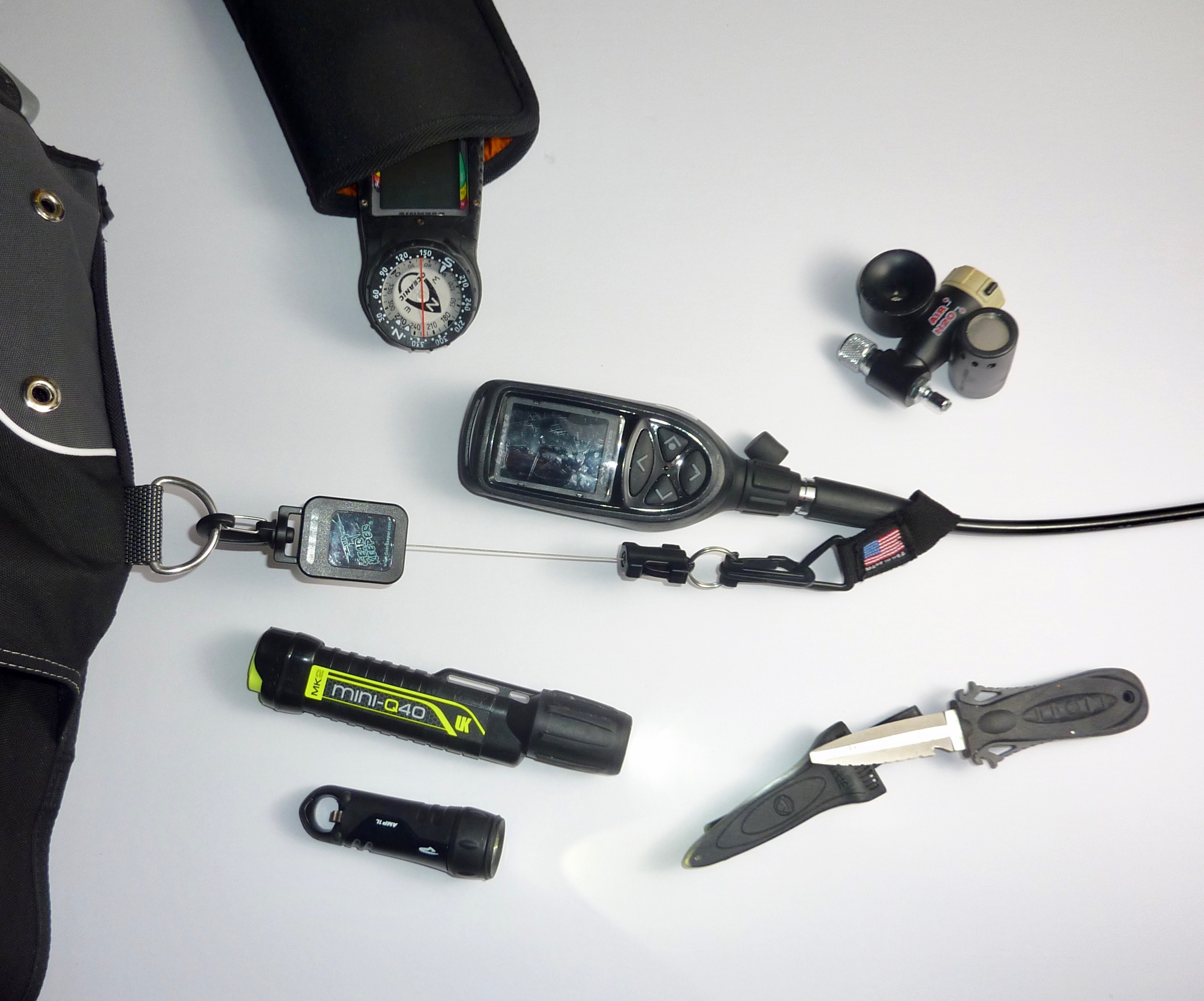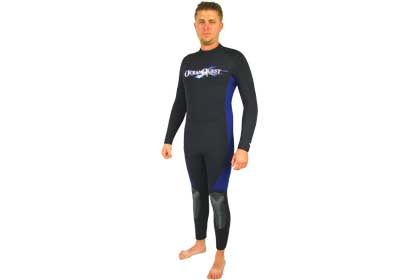Along with the mask, it was the first piece of dive gear invented. The snorkel allowed the user to breath underwater (albeit only a few inches) and take in the grandeur of the underwater world.
BASIC PRINCIPLE
At its most basic level, the snorkel is simply a tube that allows you to breath surface air with your body partially submerged. So why won’t it work a few feet down rather than just a few inches? Simply put, our lungs are relatively weak and cannot overcome the pressure that even a foot or two of water would exert. Even just two feet down would be like trying breath with a 300 pound gorilla on your chest. It’s just not comfortable.
TUBE LENGTH
The effectiveness of a snorkel is based on a few simple principles. First, it must be the right length, basically, from the mouth to just over the top of the head. Too short and you’ll be forever inhaling water. Too long and you be fighting that gorilla on your chest or the simple difficulty of trying to move a larger volume of air through the tube. A fact that escapes many is that because not all have the same size heads, not everyone should be wearing the same size snorkel.
TUBE DIAMETER
Another variable is tube diameter, inside diameter to be specific. You would think that you’d want the largest diameter possible to make breathing easier — not so. A large diameter tube means more air to move and while this may be okay for a large diver, it could be very inefficient for the smaller diver. More “dead air” must be moved to get at the fresh air. If you are snorkeling a lot and working hard, this could make quite a difference.
TUBE SHAPE
Obviously it is not a straight shot from the top of the head to the mouth. Classic shape of the snorkel is a “J.” A modification later developed to make the shape more streamlined in the water with a curve at the top to hug the head more closely. Other effective shape modifications have followed with a slight curve to the back of the head for better horizontal snorkeling and a more effective curve at the mouth so the snorkel fits closer to the face.
For scuba divers, the most effective tube configuration is that with a flex tube in the lower portion. With this, the mouthpiece can drop away while the regulator is in use. When you choose a snorkel with a flexible lower tube, make sure that the flexible portion is still rigid enough to hold up under heavy breathing or bending (tubes that are too soft will collapse). Also, the flex tube should be smooth bore, not ridged like the exterior. A ridged interior will create breathing resistance and trap debris and water.
PURGE VALVES
Water will seep into even the best snorkels, either through the mouth, at the top of the tube, or just as condensation from breathing. Purge valves at the base of the snorkel are an effective way of controlling this excess moisture. The simple one way valves are best when medium or small and somewhat protected from the intrusion of sand and debris. A small reservoir will allow the accumulation of moisture and then a simple exhalation should expel the water.
SNORKEL TOPPERS
Time was that nothing should be on top of your snorkel tube but a hole. But that was back in the days of ping-pong ball valves and other poorly conceived ideas. Many of the “dry snorkel” ideas of today are very well thought out and work quite well with little obstruction of breathing. All devices do, however, come at the cost of increased breathing resistance. Some devices achieve a balance by making the devices as clever and effective splash guards that slow breathing very little. But if you are a purist, such as myself, nothing beats a bare hole in the top of your snorkel.
ADDITIONAL CONSIDERATIONS
Well designed snorkels will have a tube that the cross section is elliptical. An elliptical tube is more streamlined in the water and will shed interior moisture quicker.
It may seem to be a small considerations but “clips” or “retainers” are now important features. Many are very ingenious, allowing quick and easy removal and installation of a snorkel from the mask. But not all retainers work with all snorkels. Make sure you have a spare that fits your particular snorkel.
As previously stated, not all snorkels fit all sizes of divers. This is true not just in tube diameter and size, but in the mouthpiece as well. Usually, snorkels that are too small in the tube will also be so in the mouthpiece. Remember, unlike with regulators, snorkel mouthpieces are generally not interchangeable. Make sure the snorkel you choose has a mouthpiece that will fit you comfortably, especially if you will be using the snorkel a lot.
The modern snorkel is a marvel of simplicity, but a lot of engineering hours have gone into making it a much improved device than those of just a few years ago. Many carry patents. And more importantly, dedicated customers that swear by one design or another. Check out the variety of what is available at your local dive store.










